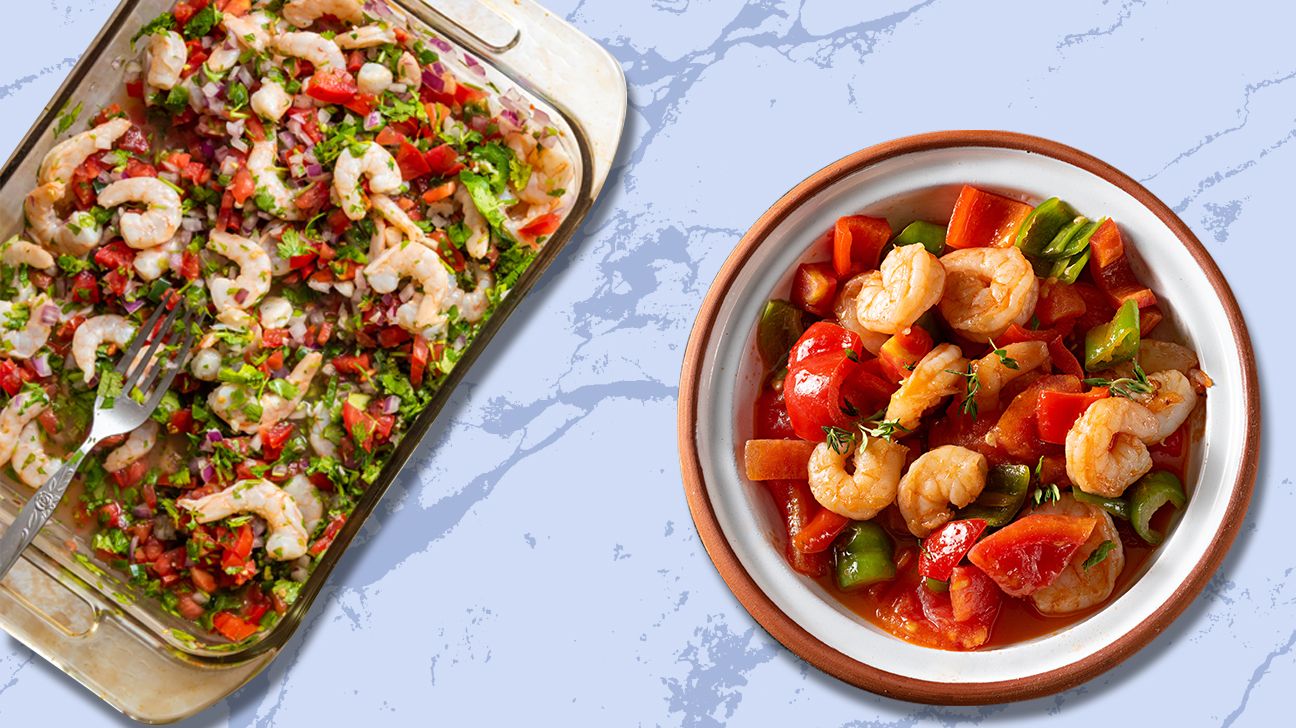South American cuisine is full of colorful, flavorful options — including ceviche, a traditional dish of raw seafood marinated in citrus juice. But if the words “raw seafood” strike fear into your heart, you might (understandably) be skeptical of ceviche.
Need a bit more info before you dive right into this Peruvian classic? Let’s talk ceviche deets.
Food historians believe ceviche (also known as seviche or cebiche) originated among the Incas, who seasoned their fish with salt and chile peppers and “cooked” it in the juice of tumbo, or banana passionfruit. However, there’s another intriguing theory that ceviche was imported to Peru by Arabian immigrants.
Regardless of its backstory, ceviche is known today as a traditional South American (and, more specifically, Peruvian) appetizer or main dish.
Technically speaking, cooking requires heat, so ceviche isn’t cooked. But it’s not exactly raw, either.
Huh? Here’s the deal: Both heat and citric acid are agents of a chemical process called denaturation.
In this process, heat or citric acid changes the proteins in the fish, unraveling the molecules and altering their chemical and physical properties. When fish is bathed in citrus juices, this process of denaturation turns the flesh firm and opaque, as if it had been cooked with heat.
So how long do you need to marinate fish in citrus juices before denaturation takes place? Well, it depends on the type of fish and how you like it “cooked.”
After soaking in citrus juices for just a few minutes, fish develops a firm, opaque exterior but maintains a raw, sashimi-like interior. If you marinate the fish too long, it may seem tough and “overcooked” — and the citrus juices can overpower the flavor of the fish.
Whatever type of fish you’re using, it’s important to cut it up into bite-size strips, because the increased surface area will make it easier for the citric acid to do its work.
A flakier fillet, like flounder, snapper, or sole, or tender shellfish like scallops may only need to marinate for about 15 minutes. Quarter-inch strips of mahi mahi, a hearty and dense fish, could take closer to 50 minutes or an hour to “cook.”
Even though citric acid denatures the proteins in fish, it won’t kill bacteria like heat does. So it’s super important to use high-quality, disease-free, and parasite-free fish. Otherwise, you run the risk of contracting a bacterial infection or even (eek) a parasite.
If you’re pregnant or immunocompromised, your doctor may recommend you steer clear of ceviche for safety’s sake.
Even if you don’t have a health condition, it’s best to start your ceviche with fish that’s been frozen.
According to chef Mark Bittman’s The Best Recipes in the World, “If you’re cautious, you will want to use fin fish that has been frozen to -4°F (-20°C) for 7 days.” Or, if you have a commercial freezer, give your fish 15 or more hours at -31°F (-35°C). This will kill parasites like tapeworms and roundworms.
If you’re worried about bacteria that might be in the fish (or if you’re preggers and are seriously craving your favorite Peruvian starter), try making mock ceviche. Blanch your fish in boiling water for 1-2 minutes before marinating it. Pre-boiling the fish also might help it maintain its texture.
Traditional Peruvian ceviche is spiked with chiles and often served with boiled potatoes, yams, and corn to balance the heat. The dish is now popular throughout South America, the Caribbean, and Mexico — and each country has its own variations.
To approximate the flavor of pre-Hispanic ceviche, try combining lime and grapefruit juice as a marinade. Other variations include a mixture of lime and passion fruit pulp.
Ceviche recipe inspo
Whether you’re a ceviche newb or a seasoned marinade-r, you can get cooking (or, at least, denaturing) with these recipes:
Done right, ceviche is a fresh, complexly flavored dish that’s nothing to fear. And since citrus juice does the work of “cooking,” there’s no need to heat up the house to make it. Summer dinner, done!

